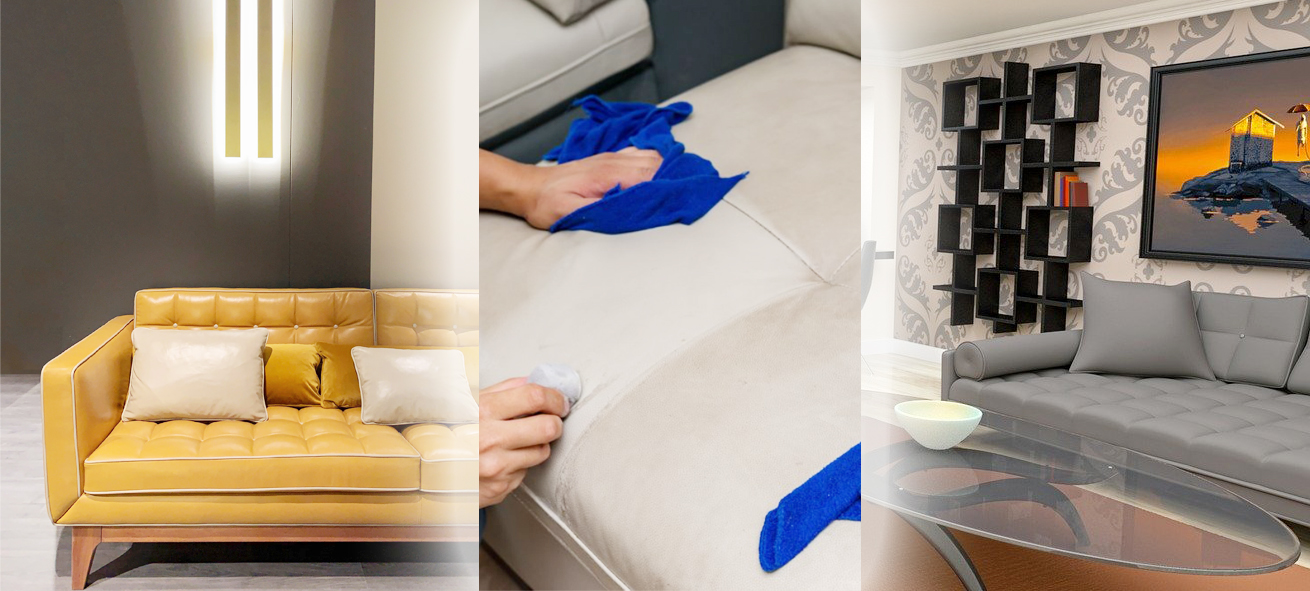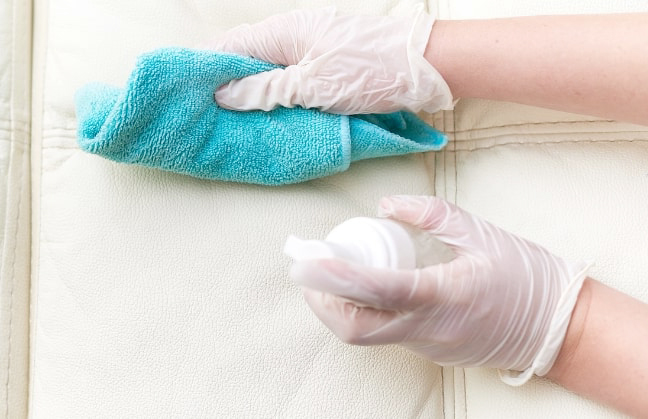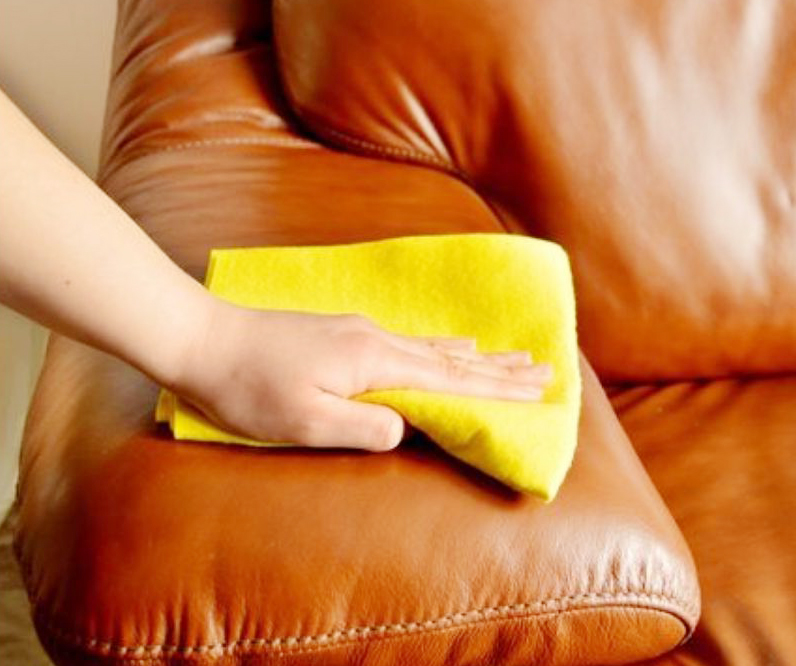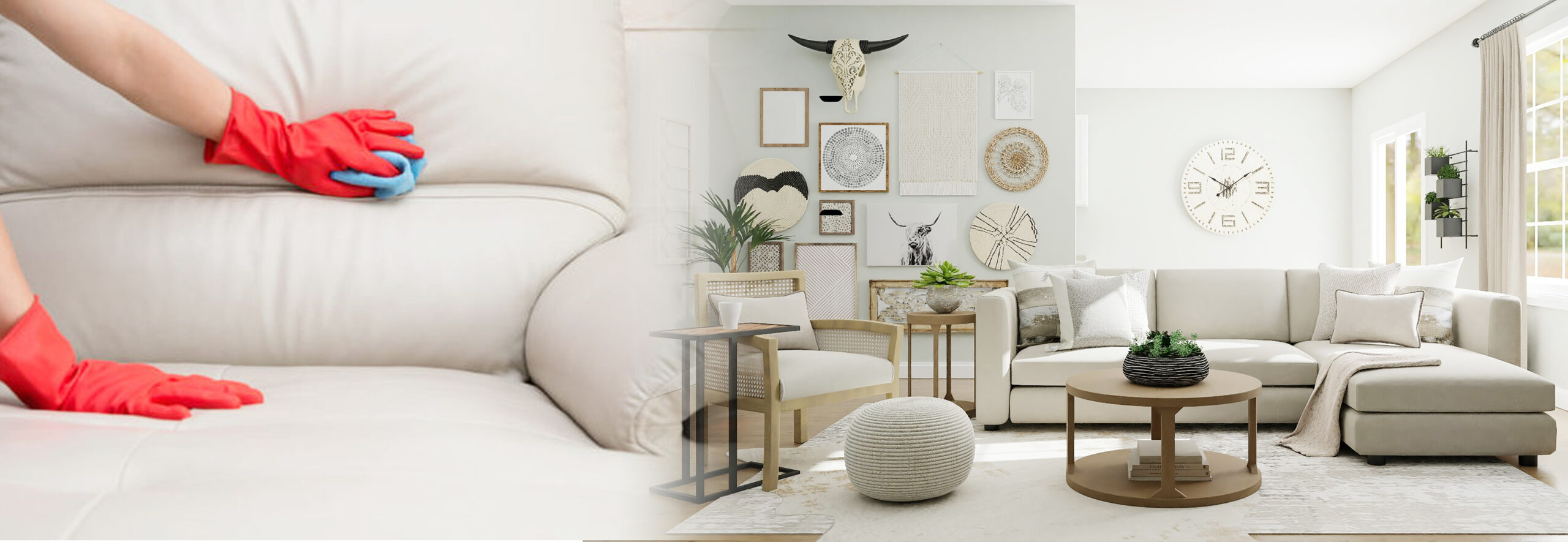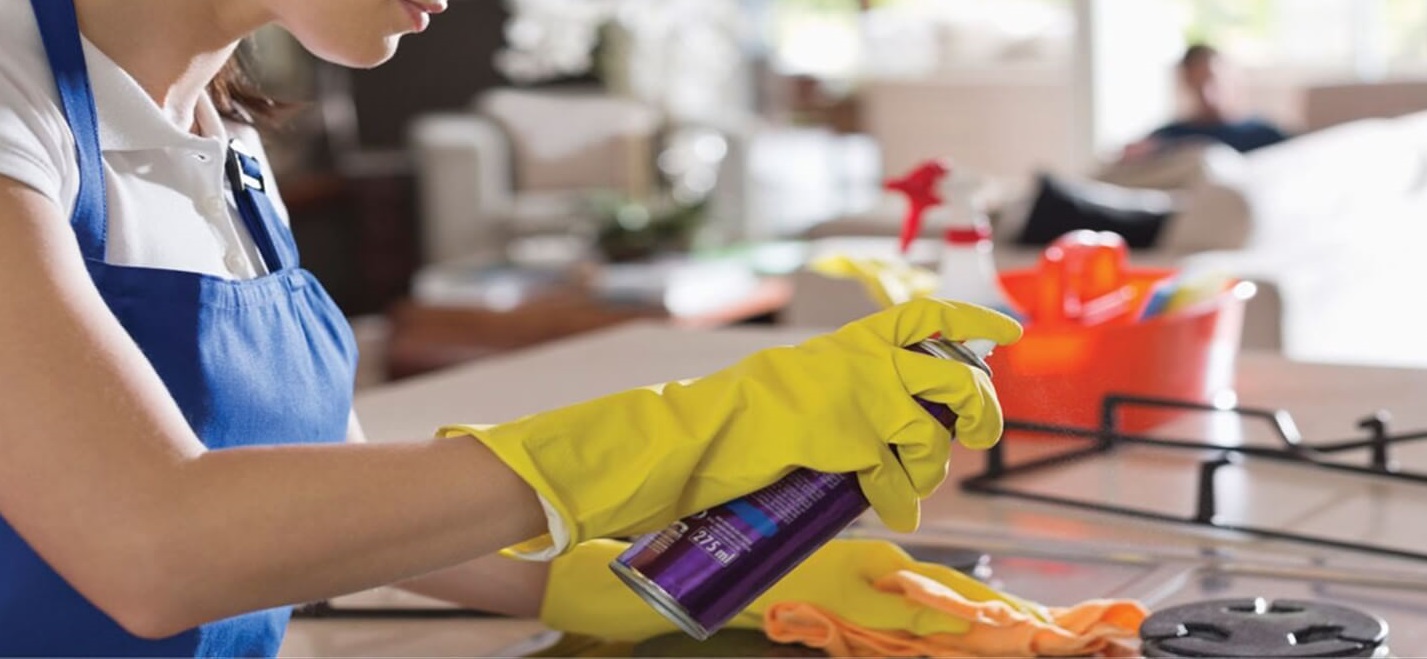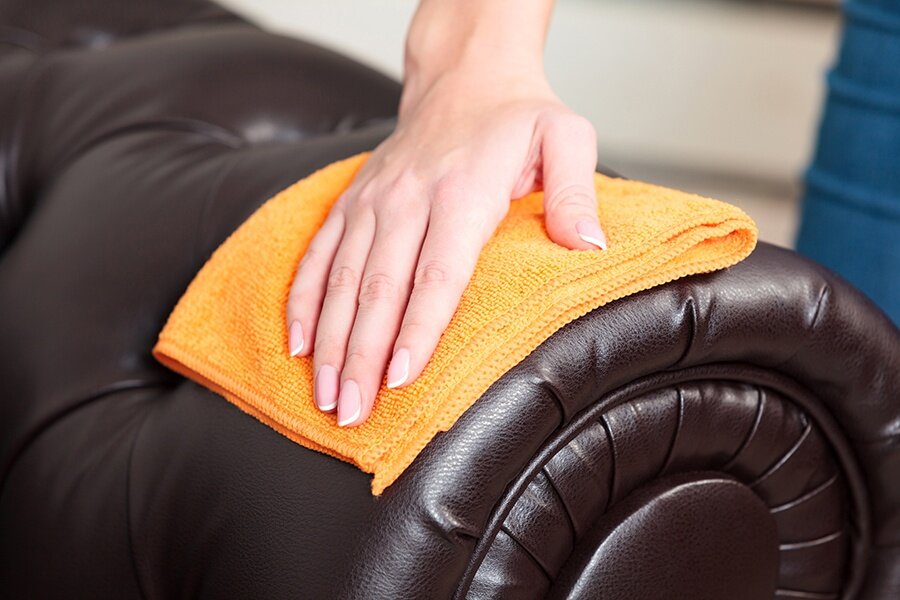How To Clean Leather Couch
A few spills and stains can affect the overall look of your leather couch. If you leave these stains and spills untreated, the quality of the couch is compromised. Therefore, you should clean your leather couch regularly to allow it to stay in its best shape. It also goes without saying that clean couches make for a clean living room.
Understanding how to clean a leather couch is essential if you are keen to protect your investment. This article offers you some real simple tips for cleaning your leather couch. Keep reading on how to clean leather and keep your pieces looking great for many years to come.
Table of Contents
How Often Should You Clean Your Leather Couch?
If you want to extend the lifespan of your couches and leave them looking new, you should perform leather cleaning regularly as part of your routine. Make it a habit to dry dust your leather or fabric couch using microfiber cloths to eliminate built-up crumbs and dust. You can make use of a soft bristle extension to perform this job. If you come across a stain or two on your couch, you should clean it more thoroughly.
Deep cleaning is necessary to remove stains from your couch. Always condition your couches with your leather conditioner of choice after the cleaning process. The conditioning helps prevent discolouration and cracks.
Leather Furniture Cleaning Guide
Cleaning Leather Furniture Essentials
To have the best results when cleaning leather furniture, here are some cleaning products you need to have:
- Warm water
- Microfiber cloth
- Washy cloth
- Leather conditioner
- Rubbing alcohol
- Baking soda
- Ice
- White vinegar
- Mild oil
Steps to Follow When Cleaning a Leather Couch
For weekly leather cleaning, some simple materials will keep your couch in perfect condition. You need a clean microfiber towel or washcloth, leather conditioner, and dish soap. Pick your preferred leather conditioner from the many choices in the market to keep your couch in excellent condition.
Follow these steps to do the cleaning.
Wipe Down the Leather Couch
You can purchase commercial leather wipes from a nearby store. However, do not worry if you do not have leather wipes, as you can always improvise. Simply create a wet pipe using a clean towel and warm soapy water. Now put a few drops of dish soap into the damp cloth and start wiping the surfaces of all your leather couches, including the armrests, sides, back, and cushions.
Drying
After wiping down all the surfaces, ensure you dry the couches thoroughly using a microfiber towel or washcloth. It ensures all the water is removed before conditioning them.
Condition the Leather Furniture
Make sure you go through the manufacturer’s instructions for your type of leather couch to know the right conditioner to use. Once you select the right conditioner, apply it to all the leather surfaces. Natural leather is made of cattle skin, so conditioning makes your leather couch stay moisturised.
If your couch has a warranty, using the wrong conditioner makes the warranty void. Thus, always keep the manufacturer’s guide to understand all the warranty entails to avoid making mistakes that can cost you.
How To Remove Different Types Of Stains From Your Leather Couch
Removing Regular Stains Leather is an absorbent material. As a result, you cannot just put it in your washer. Take care to ensure that the stain treatments you apply make things better. The great thing is that most leather stains can be removed using household items.
In order to remove regular stains from your leather couch, follow the steps below, and you will have your couch looking as good as new.
Begin with Soap
For regular stains such as ice cream or spilt coffee, dish soap can help. All you need to do is add warm soapy water to a wet cloth and apply it to the affected area of your leather couch.
Scrub in Circular Motions
Once the soap is in place, the next step is to scrub the stain off your couch. For any type of stain, rubbing in circles does the trick. You should avoid rubbing back and forth in a line because this can cause your leather couch to wear and tear. Work in circles and avoid using excess water.
Drying the Couch
Once you have completely removed the stain, wipe down the affected part before drying it with a cotton ball.
How to Get Rid of Grease Stains
You can easily tell when you are dealing with grease stains. For beginners, if you dropped a piece of food with high-fat content, you cannot guess because you know you have a grease stain. However, if a mystery stain does not go away after wiping it using a soapy, damp washcloth, or the stain feels slimy to the leather couch, you are definitely dealing with a grease stain.
Follow the steps below to get rid of any grease stains effectively.
Sprinkle Baking Soda
To get rid of the grease stain, all you need is that baking soda in your kitchen. Start by sprinkling a pinch of baking soda on the stain. Allow it to sit for some hours until all the oil gets absorbed.
Wipe the Stain Away
Once the grease stain has settled down, proceed to wipe it away using a dry and soft cloth. Perform a second wipe down using a damp cloth to get rid of any excess baking soda.
How to Get Rid of Ink Stains
It is also common for the ink to spill on your leather couch. Ink stains can be unsettling, but you can easily remove them from your leather couch with a simple cleaning.
Just follow the steps below to deal with ink stains.
Use Rubbing Alcohol
Put rubbing alcohol into a cotton ball. Dab gently until the stain starts to lift. Make sure you do not rub to avoid spreading the ink stain further.
Pat Dry
Once you remove the stain, dry the area by patting it gently using a washcloth. Repeat the steps if the ink stain is still visible after drying.
Removing Gum or Wax
You should never panic if gum or wax gets on your leather furniture. The most challenging part of the removal process is hardening it instead of rubbing or bloating it out.
Follow the steps below to remove gum or wax from your leather couch.
Cool Down the Affected Area to Harden It
Put some ice cubes in a Ziploc bag and hold the bag against the stained area. Wait for the gum and wax to harden before you try getting rid of it.
Scrape the Stain Gently
Once the wax or gum hardens, pick it away using a spoon or your fingernails. However, if you are using your fingernails, be careful not to break them or hurt yourself with the hardened gum or wax. Moreover, avoid using a knife or any other item with a sharp edge as it can tear or scratch the leather.
Consult Your Leather Couch Manufacturer
Monitor your progress, and if the stain remains, you need to reassess. If you have some doubts, look for a manual or get in touch with your couch’s manufacturer for further advice. The damage to your leather couch in the form of large stains or scratches may need professional help.
Conditioning Your Leather Couch
Now that you have finished cleaning your leather couch, it is time to condition it. Leather couch conditioning helps give it some shine. You can improvise and use several things as conditioners as they are cheaper and you probably already have them in your house. Some of these things you need include:
- Tea tree or lemon oil
- Clean cloth
- White vinegar
How to Condition Your Leather Furniture
Follow the step-by-step process given below in order to condition your leather couches.
- Mix about ten drops of either tea tree or lemon oil in a bowl; the choice is yours.
- Now add two cups of vinegar into the bowl and mix to form a solution.
- Apply this solution to the leather couch with a clean cloth. Rub it gently into the fabric in a circular manner.
- Allow it to dry overnight to guarantee a lovely shine.
- For extra freshness in the days to come, use a dry cloth and buff to restore the shine.
- To keep your leather furniture in perfect shine, you can do the conditioning after every six to twelve months.
Dos And Don’ts When Cleaning Your Leather Couch
- Only wipe away grease stain with a clean and dry cloth. You should never add water because water makes the grease soak into the leather. If the grease is dry the moment you detect it, you can sprinkle baking soda onto the affected part to effectively remove the grease.
- Beige and white leather are vulnerable to stains. To get rid of any unwanted stains from your leather couch, use a mixture of equal parts of lemon juice and tartar cream. Mix the two into a paste, apply it to the stain and give it ten minutes. Wipe it using a damp cloth.
- Always blot your leather couch after spills. It may look like a nice idea to wipe off a spill. However, this makes the spill spread to other areas of your couch. Instead of spreading the stain, use a cloth to blot it. The quicker you work on the spill, the better it is for your furniture.
- Always test leather furniture cleaner on a hidden part of your couch. If you want to use a cleaner on your own, begin by testing the cleaning solution in a hidden part of your leather couch. Take time until the leather couch cleaner dries before you evaluate the results. It helps you determine if the cleaner is perfect for your couch or not.
- Avoid using harsh chemicals. To avoid damaging your leather couches, you should avoid using products with harsh chemicals. So, as you choose the best leather cleaning products, ensure they do not have a heavy chemical content to complete the job. Go for natural cleaners that do not have any adverse effects.
- Never trust random people to clean your leather furniture. If you cannot clean the leather couch yourself, reach out to cleaning services specialising in leather cleaning. They should have a proven track record and use the recommended cleaning techniques.
How To Avoid Stains On Your Leather Couch
You can save yourself the hard work of cleaning your leather furniture often by preventing stains. After all, it’s been proven time and time again that prevention trumps any given cure. Here are some of the ways you can prevent stains on your leather couch:
Keep Your Leather Couch Covered
You desire to flaunt your elegant leather couches to your guests. However, to avoid staining and increase their lifespan, you should cover them, especially when you have visitors or have toddlers in your household. It ensures that any spillage does not reach the leather surface and stain it. Besides, your couch is also protected against environmental damage by covering it.
Avoid Chemicals that Can Lead to Discolouration
Certain chemicals and products can discolour or stain your leather furniture. You should avoid using products such as nail polish remover or topical flea medication on your leather couches because they can cause problematic stains on your leather. When you treat your pet with the medication, do not allow it on the couch until the medicine is dry. You should also avoid sitting on your leather couch in a bathing suit, even if dry. The suit can leave chlorine on your couch, fading it with time.
Prevent Mildew and Mould
Mildew and mould can develop on your leather couch, especially if you live in humid and warm areas. Therefore, invest in an exhaust fan as it keeps air circulating and ensures spores do not get on your leather couches. You can also apply a thin coat of anti-fungicidal silicon resin or wax dressing to keep the mildew off.
Avoid Placing Drinks on Your Couch
You should avoid placing drinks such as coffee or other beverages on your couch because this increases the risks of spills on the material.
Reach Out To Professional Leather Couch Cleaners
Cleaning leather furniture can be tricky, especially if it is your first time performing the job. If you doubt your ability to do the job flawlessly, you can work with the best local leather couch cleaners to get the best results. You can expect great results with professional cleaners since they use the proper techniques and products to clean leather. Moreover, they can do the job fast and follow up to ensure your leather couches are always shining.

